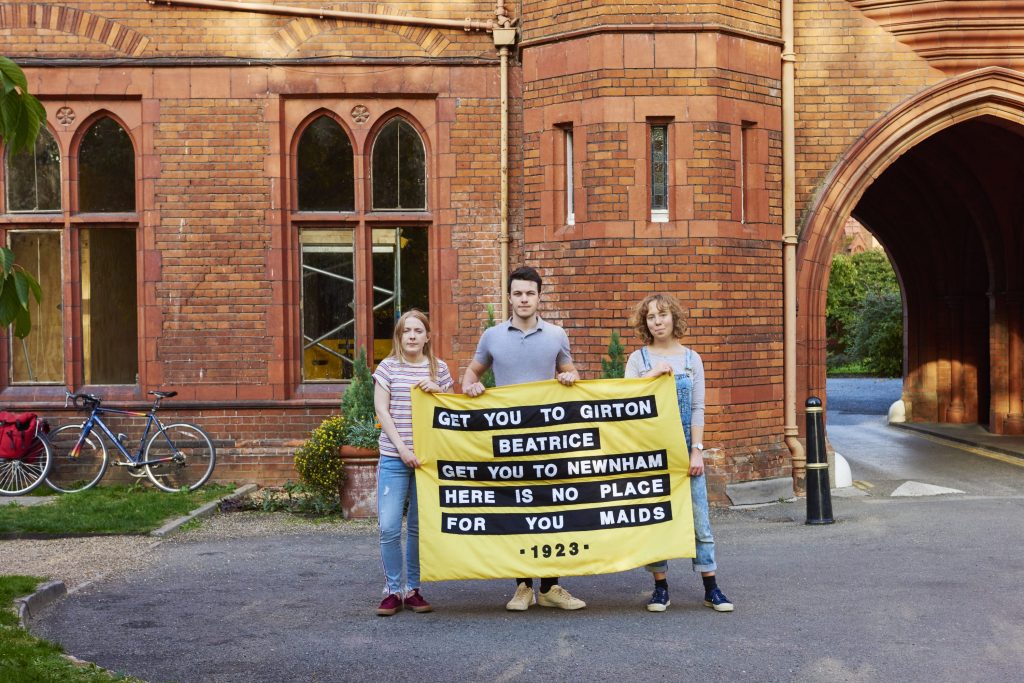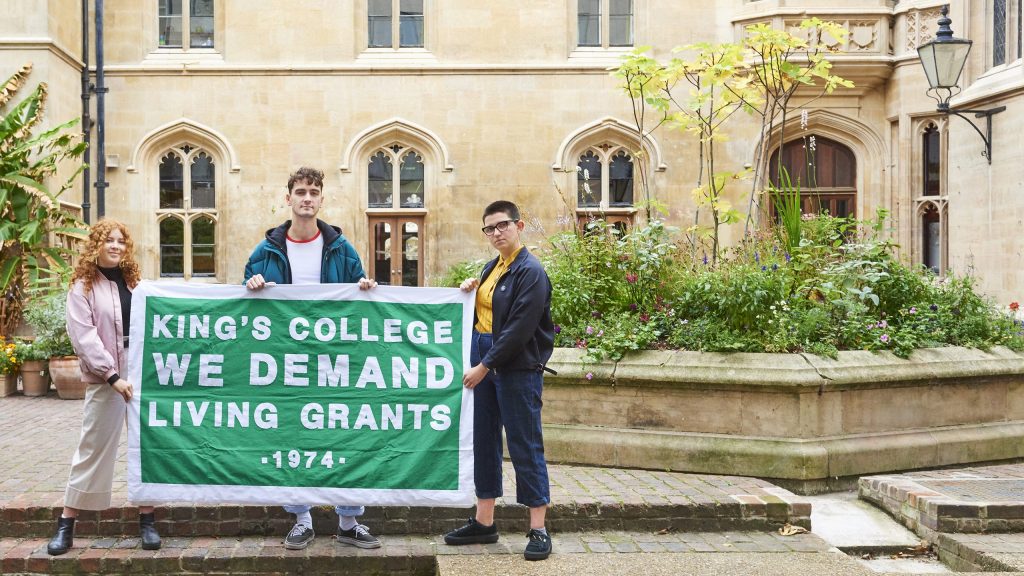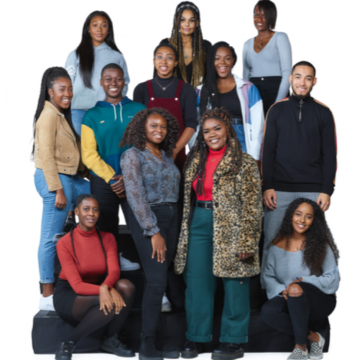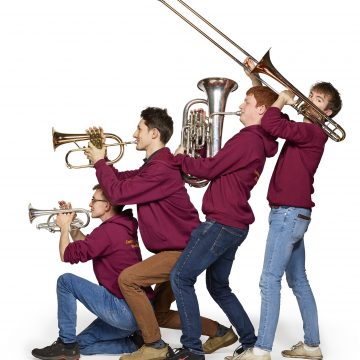
This House Believes
The Junior Combination Room, JCR, Student Union or, at Peterhouse, Sex Club, is the beating heart of Cambridge student politics.
It is not unusual for the average fresher to miss the significance of the Junior Combination Room. It takes time – and experience – to discover that what appears to be a down-at-heel room in which undergraduates gather is, in fact, a bona fide Seat of Power.
College JCRs debate and make policy that has a real and immediate impact on student life. They have their own constitutions, their own officials and their own – often peculiar – style of direct democracy. And, with the exception of Homerton, with its sabbatical president, they are run by an elected committee of current students.
But it can be complicated. Not all JCRs go by the name. They may call themselves a Student Union, Union of Students or Students’ Association. Pembroke has a Junior Parlour, and, constitutionally speaking, Peterhouse JCR is still the Sexcentenary Club – a name customarily shortened to the ‘Sex Club’ when Virginia Murray (Peterhouse 1986) became its first female president in 1988.
“I used to put it on my CV,” she recalls. “It was a good way of getting interviews. I walked into one for a pupillage and realised everyone on the panel was staring at me. Their first question was ‘What is the Sex Club, and why on earth would you put it on your CV?’”
Mirroring the web of JCRs is a similar structure for graduate students: a student body, committee and room usually known as the Middle Combination Room (and somewhat unfairly caricatured in one Alternative Prospectus of the 1990s as “a place where elderly graduates go to watch videos of Channel 4 News”). The MCR may or may not be considered part of a single super-entity with the JCR. Meanwhile, graduate-only Colleges may have a single Combination Room that also includes the fellowship.
The Gargoyles
Nonetheless, by Cambridge standards, the JCR committee is a recent phenomenon. Towards the middle of the 20th century, most Colleges had a room where junior members could meet, socialise and read newspapers. Its funding, drawn from undergraduate fees, was usually administered by the Amalgamated Clubs – a body of representatives from College sporting societies – and much found its way back to those same societies. Some Colleges maintained a JCR committee as a minor offshoot of this, serving as an informal conduit between senior members and undergraduates. Others had only a JCR secretary to look after administrative duties.
Democracy took a while to arrive. In his 1995 book, From Our Cambridge Correspondent, chronicling 50 years of University history as reported by Varsity, Mark Weatherall (Selwyn 1986) noted that even at the end of the 1950s, JCR officials might be appointed by tutors (as at Magdalene) or by the previous year’s members, as at Caius. There, the JCR was run by the Gargoyles – an 11-strong club that was the last-remaining JCR oligarchy when it finally lost power in 1963. During that decade, elected JCR officials became the norm, and the Colleges that had muddled by with a single JCR officer gained full committees. Fitzwilliam was the last to do so, in 1969.
Weatherall points out that the drive for representation coincided with a shift in student demographics. He says: “One big difference between most of the University’s history and the modern era is that in the distant past undergraduates were a lot younger – they often came up at 15 or 16. It was almost a continuation of school, and Colleges were really in loco parentis.
“After the [second world] war and up to the mid-1950s, you have an older student population. Lots of undergraduates came up after National Service. They were more politicised, more used to the idea of having representation; and that’s when you start to get the idea that JCRs are about students looking after their own welfare as well as their own entertainment. And then you get the more radical student politics of the 70s and 80s, when the JCRs became an obvious rallying point.”
Three subjects tended to dominate JCR agendas in those early days – food standards, College bills and gate hours – and a look at more recent minutes indicates that the first two remain very much live issues. On these questions and more, JCRs provide a focus for direct action against the College. The first organised rent strike took place at Emmanuel in 1964, when junior members refused to pay the previous term’s bills in a dispute over Hall fees. Since then, few Colleges have escaped similar protests, which have tended to end (as that first one did) with minor concessions all round, ensuring everyone saves face.

The wicker goat
Alongside all this, however, is another constant: the comedy JCR motions, joke candidacies and running gags that are impenetrable to anyone outside College. It’s something that strikes a chord with Alex Cicale (Fitzwilliam 2013), president of Fitzwilliam’s JCR in 2015-16. He says: “In my year, we stood for election because we thought we could make things better for people in College, and we concentrated a lot on welfare issues, especially mental health. We started up Fitzwilliam’s first-ever shadowing scheme, hosting A Level students who had no experience of university in their families. And we did standard things like trying to improve the housing ballot system, which had always been a nightmare.
“But we also had to deal with the saga of a wicker goat that one of the fellows had made for the College. She asked me to pass on a message to the students to stop moving it around to take selfies, because it was getting bashed to pieces. And one of the biggest responses was when we made the pool table free and brought in table football. It’s amazing how much of an impact something like this had on JCR popularity, particularly in light of the more nuanced discussions going on behind the scenes.”
As well as balancing the worthy and the frivolous, JCR officers have to be both inward- and outward-looking. While party politics are almost absent, and engagement with national and international issues has increasingly taken place at a University level since the evolution of a central student union – CUSU – in the 1970s, Cambridge’s JCRs have expended as much effort on activism as on College affairs.
Soviet commissars
Juan de Francisco Rasheed (King’s 2008) was president of King’s College Student Union in 2009-10, having served as ents officer the year before. “Campaigning against tuition fees was a big issue,” he recalls. “We were probably the most active of all College JCRs in the big protests of the time. We occupied the Senate House and marched in the streets of Cambridge and London. All, as it would sadly turn out, for nothing.”
A contentious issue is whether JCR officers should receive any reward for their efforts, beyond a sentence on their CVs. Cicale remembers the question surfacing at a College committee meeting at Fitzwilliam. “We suggested that there should be some modest tokens of appreciation for the committee members’ hard work over the year, and one fellow compared us to ‘Soviet commissars’.”
At Peterhouse, by long-established custom, serving the JCR brings more substantial privileges. Virginia Murray says: “There’s a considerable incentive to become president, in that you get to pick the best rooms in College. I had a double set over the Perne Library – the rooms the actor James Mason had when he was at Peterhouse. They were beautiful to look at, though they had almost no heating in those days. And when I went back to celebrate 30 years of women in college, I met the current JCR president and she had the same rooms.”
With reward comes responsibility, and one of the most onerous is negotiating with College authorities. The amount of representation and influence varies from JCR to JCR, and an observer’s seat on College Council is more common than one with voting rights. But, sometimes, a bit of psychological engineering is just as effective in putting across the JCR’s viewpoint – as Jennifer Richardson (St Catharine’s 2002) found out when dealing with the proposed redevelopment of College buildings during her term as president in 2004.
She says: “The College was developing a new conference centre, which meant relocating the bar. And, as I recall, the initial proposals meant the closure of our bar for a whole year while works took place. I was quite firm that this wasn’t an adequate solution, and that temporary facilities should be provided, because the bar was the centre of College social life. But I won the argument by suggesting there might be an impact on the academic achievements of the College, because able students would be put off applying to one without a bar.”

Burlesque dancers
The thorniest issue of Rasheed’s presidency was separating the political from the personal. He says: “The representative with whom I interacted the most on JCR matters also happened to be my director of studies, and a disciplinarian – and I got punished a lot for the parties I used to throw. So I could end up discussing my latest essay, my latest party and the JCR’s latest student issues, all in the same meeting.”
Perhaps unsurprisingly, the SCR-JCR interaction that causes the most friction is not to do with academic, disciplinary or administrative matters. Catering committee is recalled with a groan and a shudder by many former officers. One former president who spoke to CAM – here granted anonymity – recalls that the situation actually deteriorated when JCR officers installed a suggestion box to provide a direct line to the catering staff.
The president says: “Once, someone asked whether there was any possibility of having a buffet brunch on weekends, with students paying a set amount for all they could eat. The College came back with ‘How does £30 a head sound?’ And at one formal, a colleague with lactose and other allergies requested a dessert she’d be able to eat. The catering team brought her out a banana, though they were thoughtful enough to present it on a doily.”
And, just occasionally, JCR politics can escape through the porter’s lodge and make headlines in the wider world. It’s something Rasheed discovered as an ents officer, when the spat caused by a Moulin Rouge-themed Valentine’s party – with burlesque dancers high-kicking on high table – was covered everywhere from the Daily Mail to Vietnamese local radio. (“There was a debate as to whether I should be sacked,” he says. “The conclusion, after a lot of heated argument, was that the dancers had been inappropriate but that I should keep the job.”)
Hammer and sickle
As president, Rasheed first faced a University-wide hullabaloo over the invitation of a UKIP candidate to a hustings at King’s event for the 2010 general election. But a greater dispute was over whether an old hammer-and- sickle flag should be allowed to stay in the College bar. “Amazingly, that was the most controversial issue in my four years at King’s,” he says. “A motion to remove it came up annually, with hundreds of students packing JCR meetings to debate the issue.
“The arguments never changed: on the one side, that keeping it is an affront to those who died under communism, and on the other, that leftwing politics is part of the College culture and it’s all a bit of a joke. The outcome also never changed. I think the flag is still there to this day.”
With only three eight-week terms and a degree to complete, taking on duties that elsewhere would fall to a paid official is no small commitment – so what’s the attraction? Current St John’s JCR Co-president Fionn Dillon Kelly is the first to take office with a running mate, Ben Jones, to split the job into more manageable parts. He says: “Previous presidents have had to spend too much time on administrative tasks, so they were unable to enact much real change. That’s why Ben and I decided to run together.
“It’s also a fantastic opportunity to find out what’s going on around College and the University and to gain some important skills – negotiating and meeting with the people who are running College. You can learn a lot from spending time with them.”
And for Rasheed, this has proved invaluable. “Participating in the JCR was great training for post-university life,” he says. “It was a crash course in running meetings, stakeholder management, delegation … in many ways, I still draw on my JCR experience today.”
-
Liam O’Connor
Girton JCR Treasurer Third-year, Astrophysics
This year, I’m looking to start a scheme whereby the JCR can pay for one-off prescription costs. I’d like to increase the funding the JCR gets per student – which hasn’t increased for several years. And as we have underspent the budget for a few years and have funds saved up, we are looking at ways of putting this money to use.
-
Molly Hale
Girton JCR Vice-President Third-year, History
I volunteer with Amnesty and I’ve done some local campaigning. But this has been the first time I’ve tried changing an institution from the inside, rather than protesting on the outside. Students on the JCR are given enough power to really contribute to College life so I want to be involved with the things that make Girton special.
-
Alice Hawkins
KCSU President Third-year, History and Philosophy of Science
I stood for President because I wanted to represent the student community that made my uni experience so spectacular. KCSU is comprised of brilliant and engaged student minds. I believe we need to strengthen that student voice at a University level, by calling for democratic accountability at the highest levels of decision-making.
-
Jake Kroeger
KCSU LGBT+ Officer Third-year, History and Philosophy of Science
I ran for the JCR because I’m interested in College politics and I want to increase sense of community among LGBT+ students. Right now, I’m organising King’s LGBT+ Liberation dinner and I’ll be continuing to work on both welfare and political aspects of my role and making sure King’s fly the LGBT+ flag for LGBT+ History Month.







